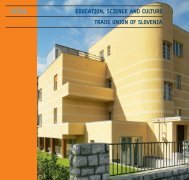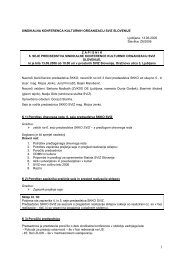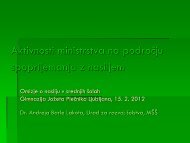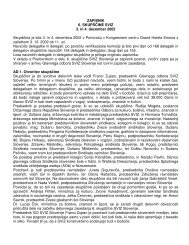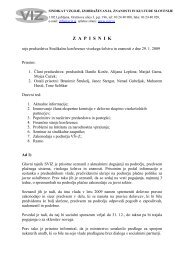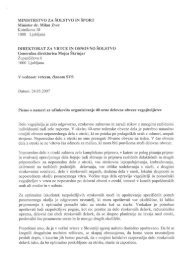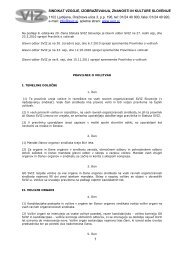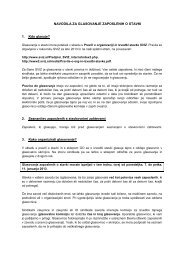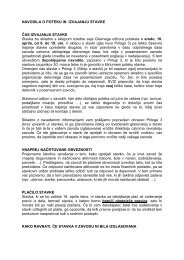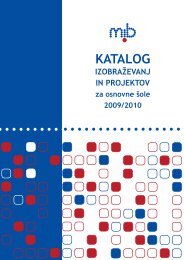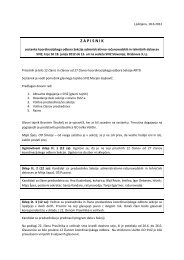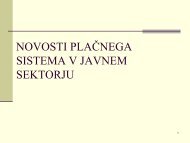You also want an ePaper? Increase the reach of your titles
YUMPU automatically turns print PDFs into web optimized ePapers that Google loves.
conceived as a rondo in three-eight time. It begins humorously with the bassoon’s<br />
leaping octaves, above which develops a distinctive tune. The feature<br />
of the movement is the central section, which the composer conceived as a<br />
sequence of cadenzas for all of the instruments, interrupted by the familiar<br />
octaves in the bassoon. The lightness and smoothness of the work leave us<br />
speechless: Russian composers did actually know how to write chamber music.<br />
The latter is even more clearly confirmed by the opus of Dmitri Shostakovich,<br />
although today he is also primarily known for his extraordinary set of fifteen<br />
symphonies. Shostakovich’s favourable disposition towards chamber music<br />
can first be attributed to the fact that for a long time he himself considered a<br />
career as a pianist, and later frequently participated in chamber ensembles<br />
as a pianist. At the same time, the more intimate focus of chamber music<br />
offered the composer an opportunity for a deeper personal expression that<br />
was not necessarily connected with the dictates of social realism.<br />
Shostakovich wrote the Second Piano Trio in E Minor in 1944. The reason for<br />
its emergence can be found in the unexpected death of the composer’s friend,<br />
musicologist Ivan Solertinsky, with whom he had established a friendship in<br />
1927. The broad minded Solertinsky had written the first Russian monograph<br />
about Mahler, and had also infected Shostakovich with a love for the great<br />
late romantic, as is most clearly evident in the composer’s Fourth Symphony.<br />
The Trio can be placed alongside other commemorative works composed<br />
in this period: the Eighth Symphony was conceived as an homage to the<br />
victims of the Second World War, and the Second Piano Sonata was written<br />
in memory of Shostakovich’s piano teacher, Nikolayev.<br />
The Trio commences with the mysterious sound of cello harmonics and muted<br />
violin. In the continuation, however, this fragile opening grows into a robust<br />
musical expression of symphonic dimensions. A wild Scherzo does not bring<br />
any real relief, but is instead full of numerous contrasts: in the trio the rural<br />
dance gives way to an apparently more tranquil waltz. The Largo is constructed<br />
on the basis of eight dark chorale chords in the lower register of the<br />
piano, which dominate the entire movement in the form of a passacaglia.<br />
Above them the strings develop mournful music that offers an explicit allusion<br />
to the music of Mahler. The finale is again relentless, conceived as a kind of<br />
dance of death. In it Shostakovich repeats the two central themes from the<br />
first movement and the slow movement, while new material is provided by<br />
elements of Jewish music, something that has a clear symbolic meaning in<br />
the composer’s opus: it is music of the oppressed. Of course, Shostakovich<br />
uses this symbol primarily because it is rather easy to interpret: on the one<br />
hand, it can symbolise the suffering during the holocaust of the Second<br />
World War, while, on the other hand, it expresses the composer’s personal<br />
dilemma – how to satisfy political expectations without entirely capitulating.<br />
PROGRAM / PROGRAM<br />
Gregor Pompe<br />
37<br />
Prevod / Translation: Neville Hall



